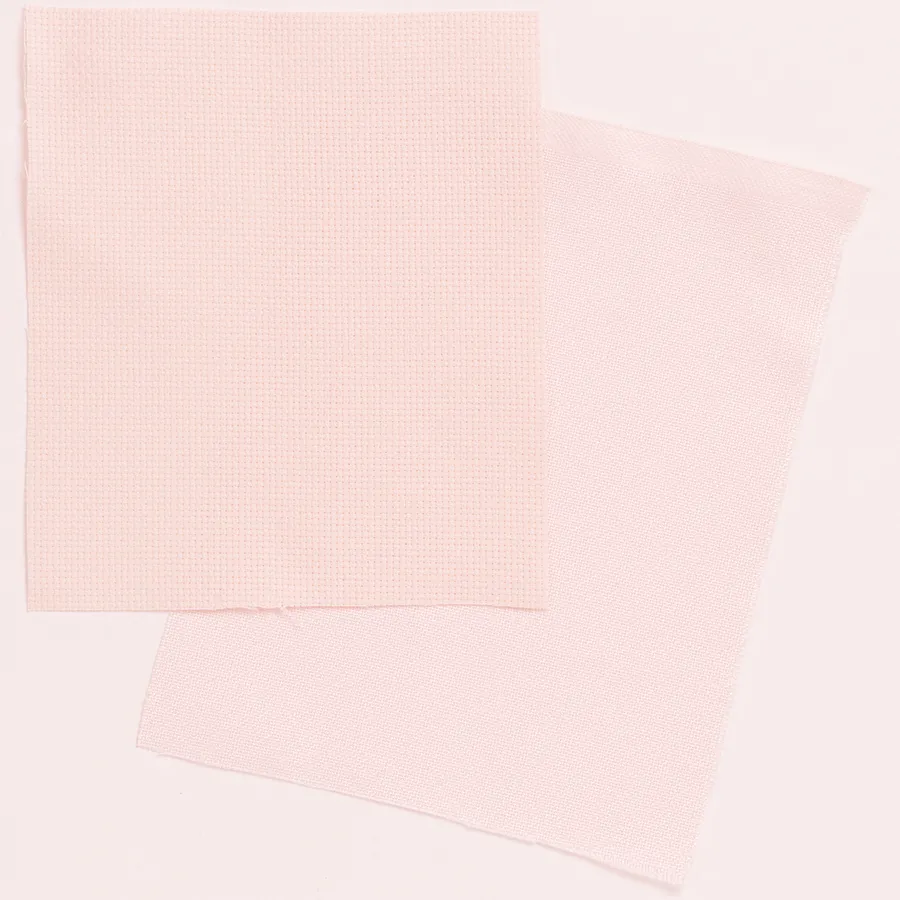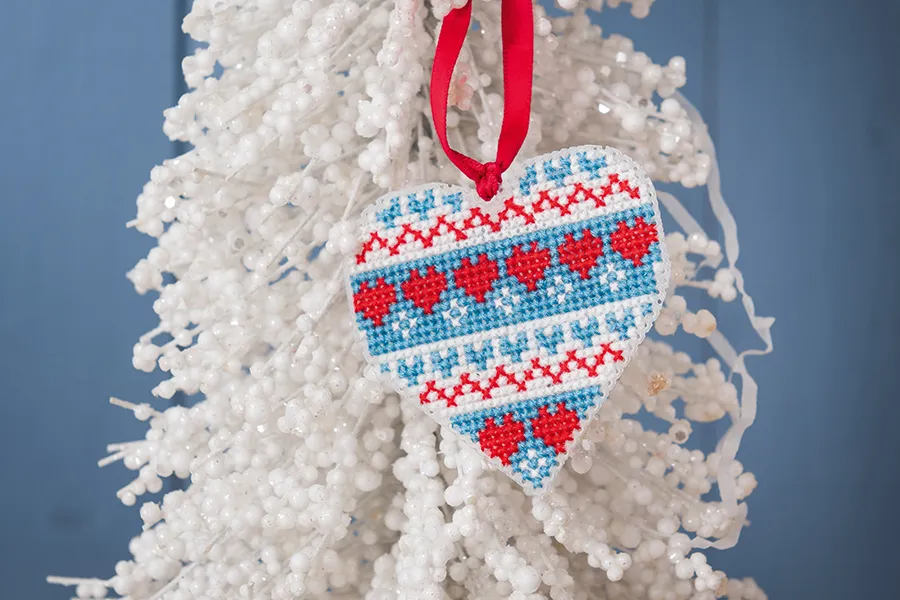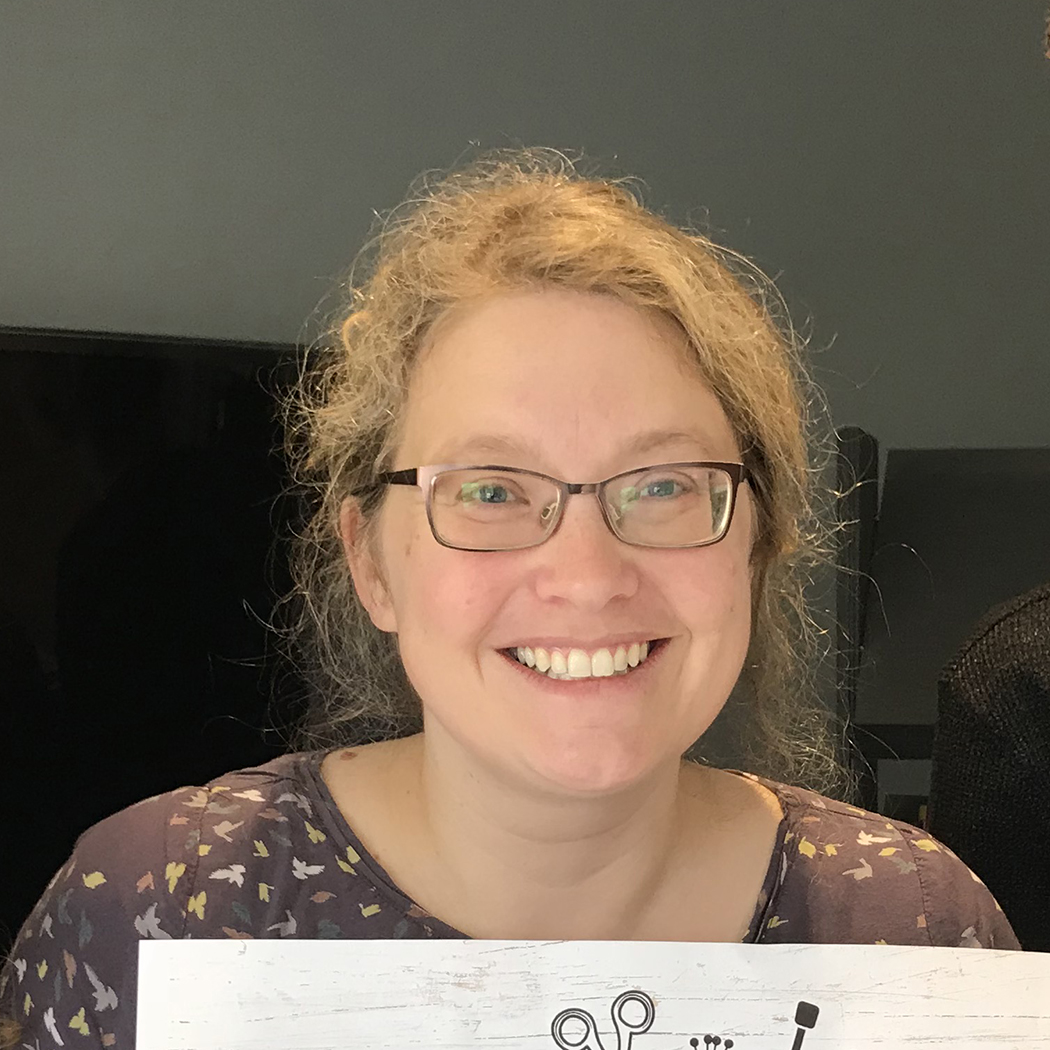Aida cross stitch fabric
Aida is the fabric most commonly used cross stitch fabric, as it has a regular woven pattern that’s easy to stitch on, and clear, visible holes. You’ll find that 14-count (14 holes per inch of fabric) is a popular choice, although other counts are widely available, and you’ll be amazed by the range of colours and styles you can buy to suit different projects.
Try antique aida cross stitch fabric to give an old-fashioned feel to sampler cards, or iridescent aida cross stitch fabric to add sparkle to your Christmas projects, for example. It’s the perfect fabric for beginners to start on, and it’s best suited to projects that use whole cross stitches and backstitch only. You can work fractional stitches on it, too, but in order to do so you’ll need to use a sharp needle to push through the solid centres of the aida blocks.

Evenweave cross stitch fabric fabric
Evenweave cross stitch fabric is made up of single threads that cross each other at right-angles, and common counts are 28-count and 32-count – if you stitch a design on 14-count aida cross stitch fabric and then again on 28-count evenweave cross stitch fabric, the finished pictures will be the same size.
When stitching on evenweave cross stitch fabric, each cross is worked over two threads of the fabric, missing out alternate holes, so it’s great for fractionals and speciality stitches as you can use the hole in the middle of each square, rather than piercing one with your needle.
You might want to use a magnifier when stitching on this soft cross stitch fabric, to help you see the holes more clearly. Also, since the weave is quite loose, it tends to fray easily, but you can bind the edges with masking tape to prevent this.
Hand-dyed cross stitch fabrics
Most aidas, evenweaves and linens come in plain colours, but you can also get hand-dyed versions to give your projects an extra-special touch. They’re great because you’ll end up with a design featuring an interesting background, without the need for lots of stitching! Hand-dyed cross stitch fabrics come in many colour-combinations and effects, with fabulous names including Colourful Clouds and Fairy Dreams. Each piece is also totally unique, so you can be sure that your card or gift will be unique, too.
- Find a great range of hand-dyed fabrics at Polstitches
Linen cross stitch fabric
This is the cross stitch fabric of choice for luxury projects, so consider using it for heirloom pieces or special cards. It’s a type of evenweave made from the fibres of the flax plant, making it soft, yet durable – it will outlast cotton, washing up beautifully every time.
Linen has a super-fine finish, so it will give your projects an elegant, traditional appearance.
Soluble Canvas cross stitch fabric
Soluble Canvas is not really a cross stitch fabric at all but a dissolvable grid you can use to stitch cross stitch designs on to any kind of fabric, often clothing. If you want to stitch one of our card designs onto a bag or item of clothing, try using Soluble Canvas. This clever stuff is simply tacked to the item you want to stitch on and then the design is worked as usual – you’ll have to choose a motif with just whole cross stitches and backstitch, though, as the canvas cannot be split to make fractionals.
When you’ve finished stitching, place the item in a bowl of warm water and the canvas will disappear before your eyes, leaving you with a perfectly stitched item!
You can buy a 20x22cm (8x8.5in) piece of DMC 14-count Soluble Canvas from DMC stockists.
Plastic canvas cross stitch fabric
Plastic canvas is a lightweight plastic featuring holes in a grid formation, and it comes in various colours. Its rigidity makes it ideal for 3D cross stitch projects such as gift boxes and pen pots, and it’s also a good choice if you’re teaching a child to stitch as it keeps its shape perfectly, without the need for a hoop or frame.

You can’t work fractionals on plastic canvas, but you can work whole cross stitches and backstitch. Typical counts are 7, 10 and 14-count and it comes either in sheets that you cut to shape and size yourself, or as pre-cut shapes like circles, or novelty shapes such as teddy bears! To use plastic canvas in a card, suspend a design from ribbon, so it hangs in the aperture.
Perforated paper
Perforated paper is an imitation of aida, made from lightweight card. It doesn’t fray like aida or evenweave does, so for this reason it’s a good choice for small stitched items such as Christmas tree decorations, bookmarks and keyrings – and for fabulous 3D cards.
You can’t use a hoop or frame to stitch on perforated paper, but you shouldn’t need to as it is stiff, so easy to hold in the hand. Use it only for projects with whole stitches and backstitch, as the paper will tear if you try to work fractionals, and remember to keep your hands clean as you stitch, because perforated paper can’t be washed!
Printed aida cross stitch fabric
Enhance your projects by stitching them on a cross stitch fabric that’s pre-printed with a background design. We love DMC’s Impressions range, which includes aida cross stitch fabric pre-printed with hearts, swirls, checks, flowers and butterflies. Stitch as with plain aida cross stitch fabric, but bear in mind that some charts will work well on printed cross stitch fabric, and others will not.
Designs with lots of unstitched areas, monochrome projects and simple silhouette shapes tend to work well, whilst complex designs using lots of colours don’t. To ensure that your stitched design stands out from the patterned cross stitch fabric, you may want to use three strands of thread instead of the usual two.

